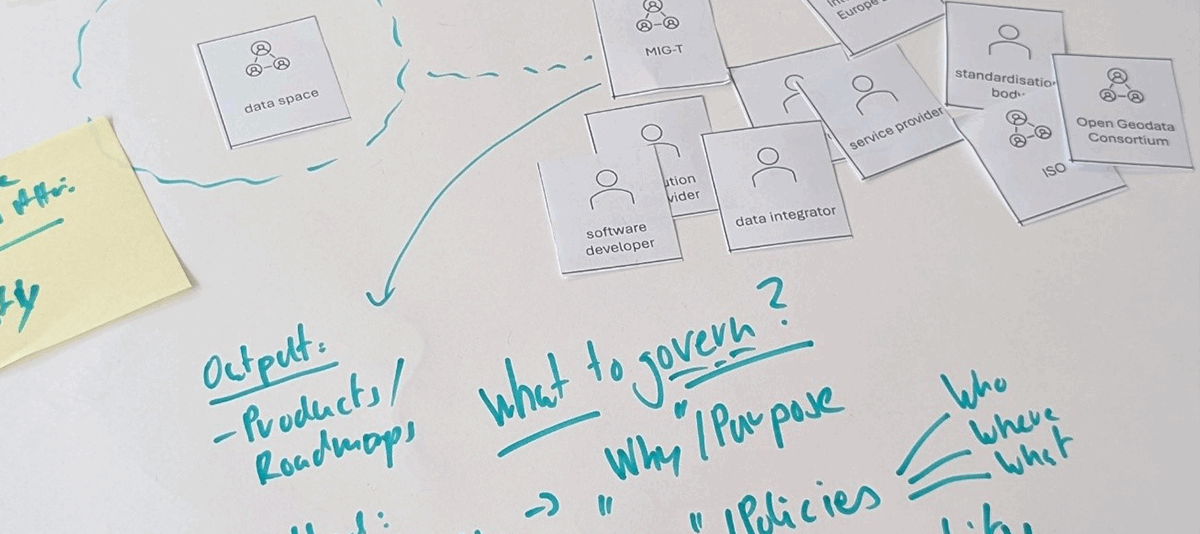
From Compliance to Impact: The Participatory Policy Lab Session on “Community and governance of public sector geospatial data within the Green Deal Data Space”
The night before the workshop, I joked that we would have to save INSPIRE the next day.
When the time came, I joined a group of 20 highly distinguished individuals. They represented public authorities and data providers, the European Commission and its services, as well as standardisation bodies, service providers, and researchers. Together, we discussed how the role and governance of INSPIRE could change in the next years to be able to become more efficient – and how to effectively address the major challenges that lie ahead of us.
Note: In this article, I will endeavour to provide a neutral documentary of events, focused on take-away messages and actionable insights. Given the complex nature of the subject, I could not write down all individual talking points and have therefore summarised the discussions I took part in. You should treat all of this as my interpretation, not as an official group standpoint of some form. Should you feel some aspects are misrepresented, please let me know.
The INSPIRE Community
The first thing we did during the workshop was to introduce ourselves and to choose one word each to describe the INSPIRE community.
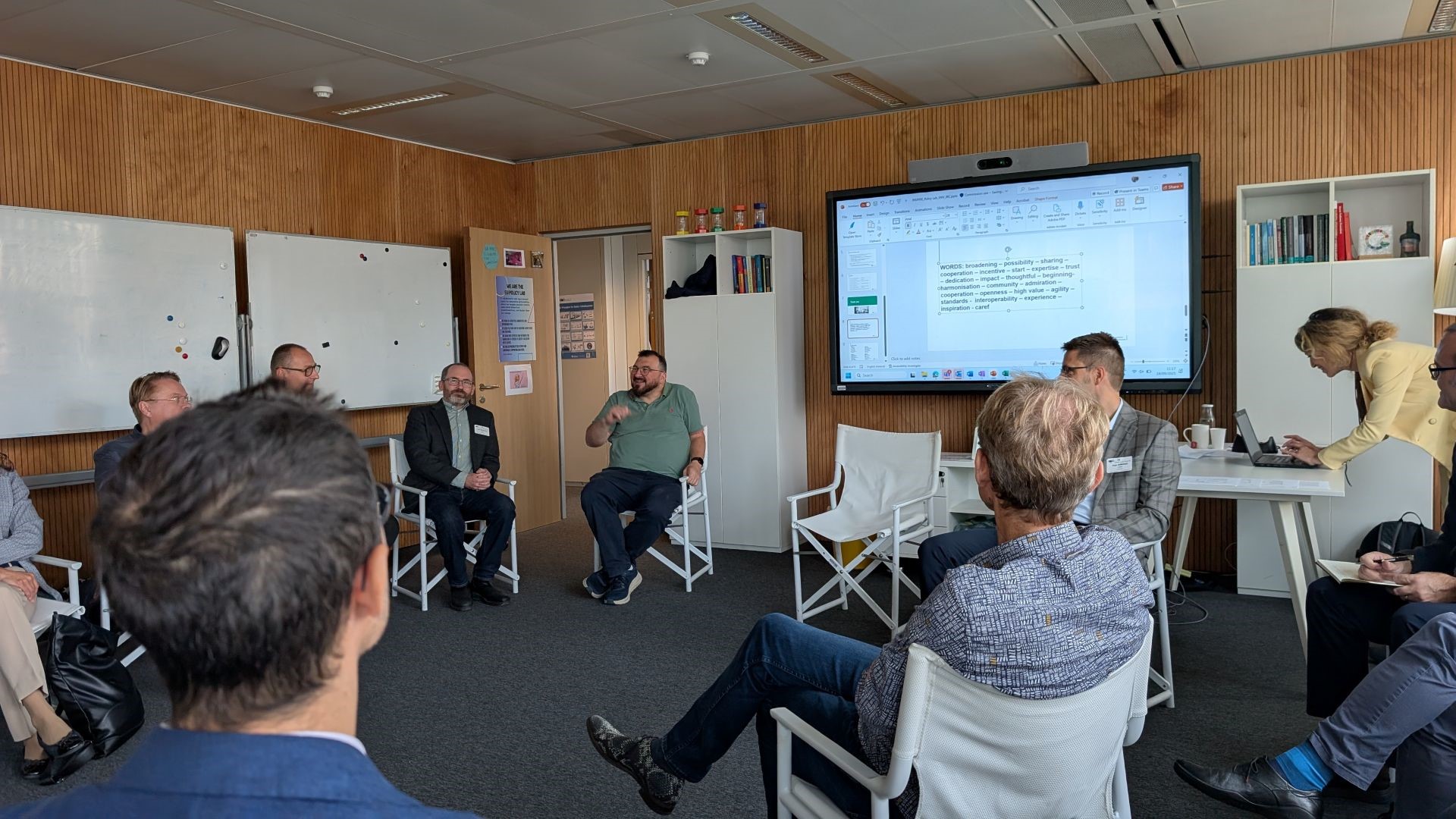
The participants chose terms like possibility, beginning, openness, impact, expertise, dedication, and cooperation. I think all of us should keep that list on hand and return to it whenever we are in doubt. From those strengths, we can build enormous value.
What would INSPIRE look like in 2040?
After this introduction, we got a brief keynote from the commission for the workshop, and then began the morning's interactive block – trying to figure out what INSPIRE would look like in 2040.
It is hard to imagine the kind of world we will live in in 2040, given the speed of change and the number of crises we are currently facing. In such a stressful situation, it is sensible to not just submit to doomerism, but to think long and hard about what the better alternative could look like, and what we may be able to do to arrive at that better outcome.
As I recently learned at the Future Forest Forum:
TAPAS (There are Plenty of Alternatives) instead of TINA (There Is No Alternative)!
There are many dimensions to such a positive scenario. When I think of Europe in the year 2040, I see a continent that has successfully defended its principles and established a unique position in the world, characterised by a healthy environment, high resilience of man-made and natural systems in the light of risk and uncertainty, efficient, digital governments, and a productivity boom fuelled by cheap renewable energy and powerful sovereign AI tools.
These tools have been made possible because the continent has a working data and digital service market that continuously produces highly innovative solutions, whose value capture is fairly distributed. Open, indiscriminatory data ecosystems are the standard within that market. Data is universally seen as a foundational asset category that creates value when used in line with the interests of all involved. Platforms that tried to monopolise data access and usage have all but disappeared.
In this context, let’s imagine the contribution of INSPIRE in 2040. Already in 2025, there is a lot that INSPIRE has done to deliver the cross-sector data foundation for creating value. It was a trailblazer in making spatial and environmental data more accessible and useable, leading to local, national, and international initiatives that all contribute to spatial data being ubiquitous nowadays. Consequently, one of the contributors said „Don’t fix what isn’t broken“.
But if INSPIRE really is to make a major contribution in the future, helping Europe to be more competitive and resilient, it also has to change. In teams of two or three, we described how we would cooperate to build the governance steering towards that future and what its outputs would be. The moderators consolidated the outputs of all groups into a list:
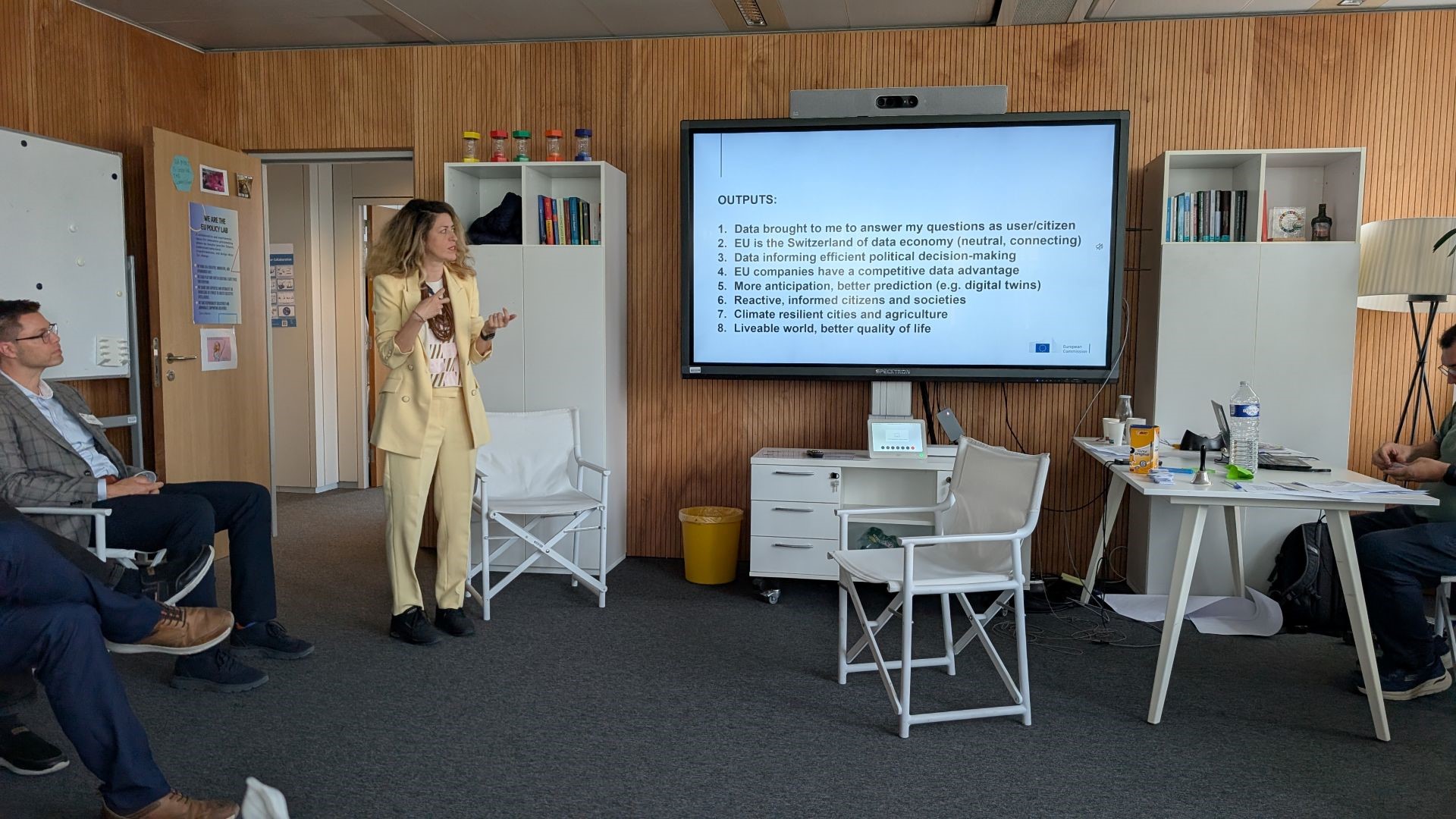
We then described the principles and objectives for these cooperations in the governance of “INSPIRE 2040”, which were, again, merged into a list:
Collaborative Governance that is inclusive, holistic, transparent and accessible
…that aims to connect domains and aims for a bigger scope
…that enables impact at scale and speed
…that is user centric and enables potentials with flexibility and agility, to find efficient solutions that minimize burdens and maximize value creation
…that is unburdened by complex legal frameworks while not failing into the trap of simplistic reduction of complexity
…with stakeholders from EC to SMEs that are willing to work with what they propose (“Skin in the Game”, “Eat your own dog food”)
…and results in trustworthy data products that inform decision making for citizens and societies
During the lunch break, our intensive discussions continued, with topics ranging from iterative compliance to enabling AI applications to use their full potential.
What – and how – to govern?
After lunch, we kicked off the second block of the workshop. In this one, we split into four teams and started with a concrete scenario as a background for any governance structure we might later create.
Swiftly, three core issues came to the fore:
- What do we govern?
- Towards which goal?
- And who are “we” – i.e. which stakeholders are involved?
The discussions on these topics were the most intense of the day. The outputs of the different teams were really interesting and quite complementary. One group decided to word their outcomes as questions, for example:
- What will confirm INSPIRE's success in 2040?
- How does the INSPIRE community connect with data end users to know their needs and to identify potentials? Via marketplaces?
- Generally, how do we better engage with users and service providers?
- How do we allocate responsibilities in a new governance structure to different groups ranging from the commission to scientists, citizens and businesses?
- How does INSPIRE Governance relate to the Green Deal Data Space Governance? Do we still need a separate INSPIRE governance, and if so, for what?
All in all, there were two topics that stood out to me in the presentations from the four groups, including ours, which I’ll explore in the next two sections.
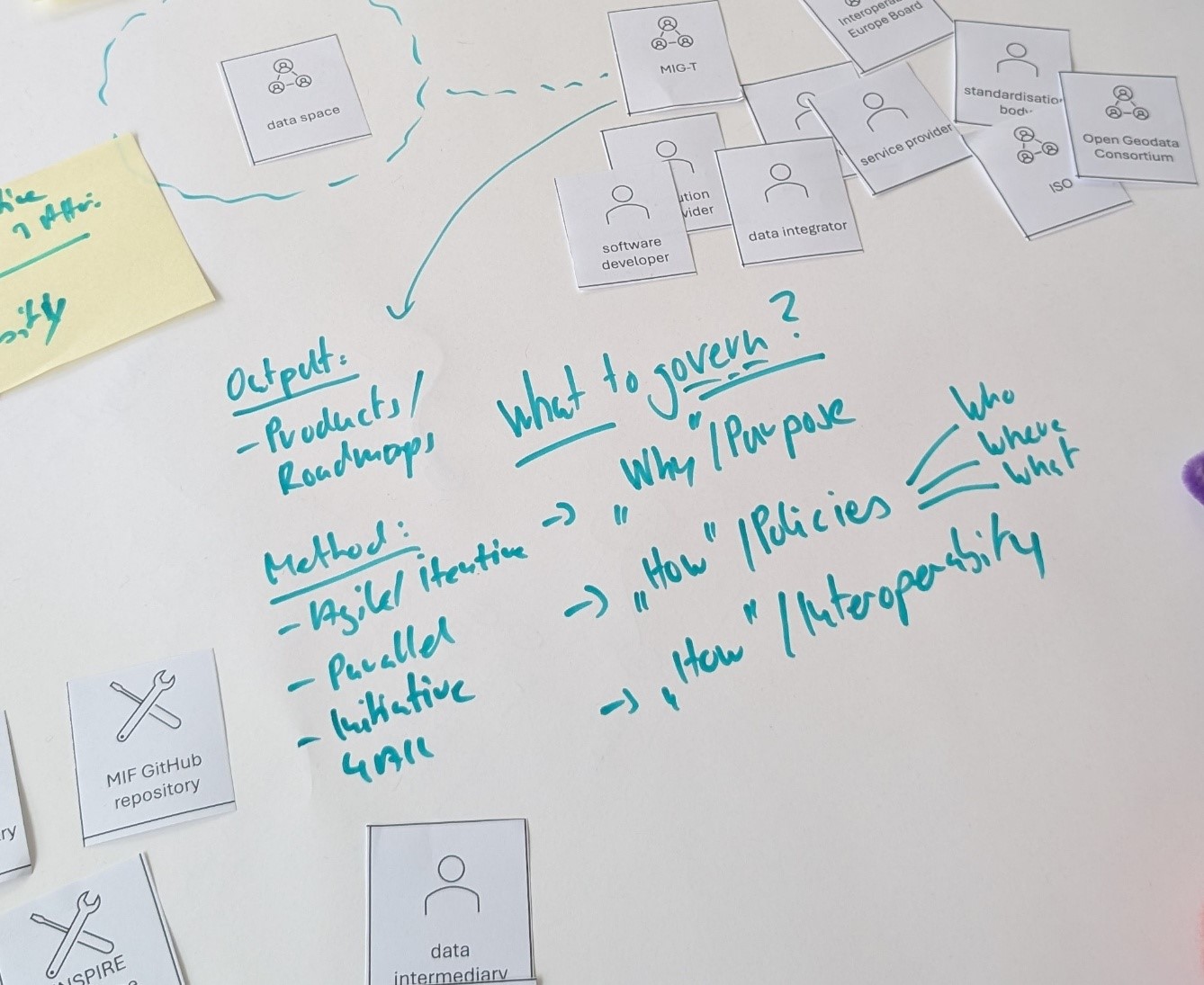
Listening to users and acting on demand
A common criticism of INSPIRE was that the created data products are not user-friendly. This was based mostly on two observations:
- The default GML encoding often brings in accidental, unnecessary complexity, and is not well-supported by software that many GIS professionals use.
- The specific data models created by the drafting teams were developed to support some key use cases but were often less suitable for national or regional use cases than already existing, non-harmonised data. As an example, if you do spatial planning in Germany, you’d use XPlanung, not INSPIRE PLU, because there is significant information loss in going to INSPIRE.
As shown by, for example, the MIG-T 2017.2 activity and documented in the evaluation of the INSPIRE directive, the approach chosen by the INSPIRE teams was suitable for data validation and system-to-system data exchange, but suboptimal for other scenarios. Nonetheless, INSPIRE data and services are commonly used, especially when no alternatives exist as open data.
Therefore, going forward, the governance needs to be able to develop data products that match user needs and potential. To do so, interaction with stakeholders and user groups is necessary. Currently, the INSPIRE legislation is not very inclusive, and it is not possible to just open groups such as the MIG-T up to other actors unless explicitly invited. There is also the problem that most users of the existing products are anonymous, and that those potential users who simply do not find what they are looking for rarely stop to tell us about what they need.
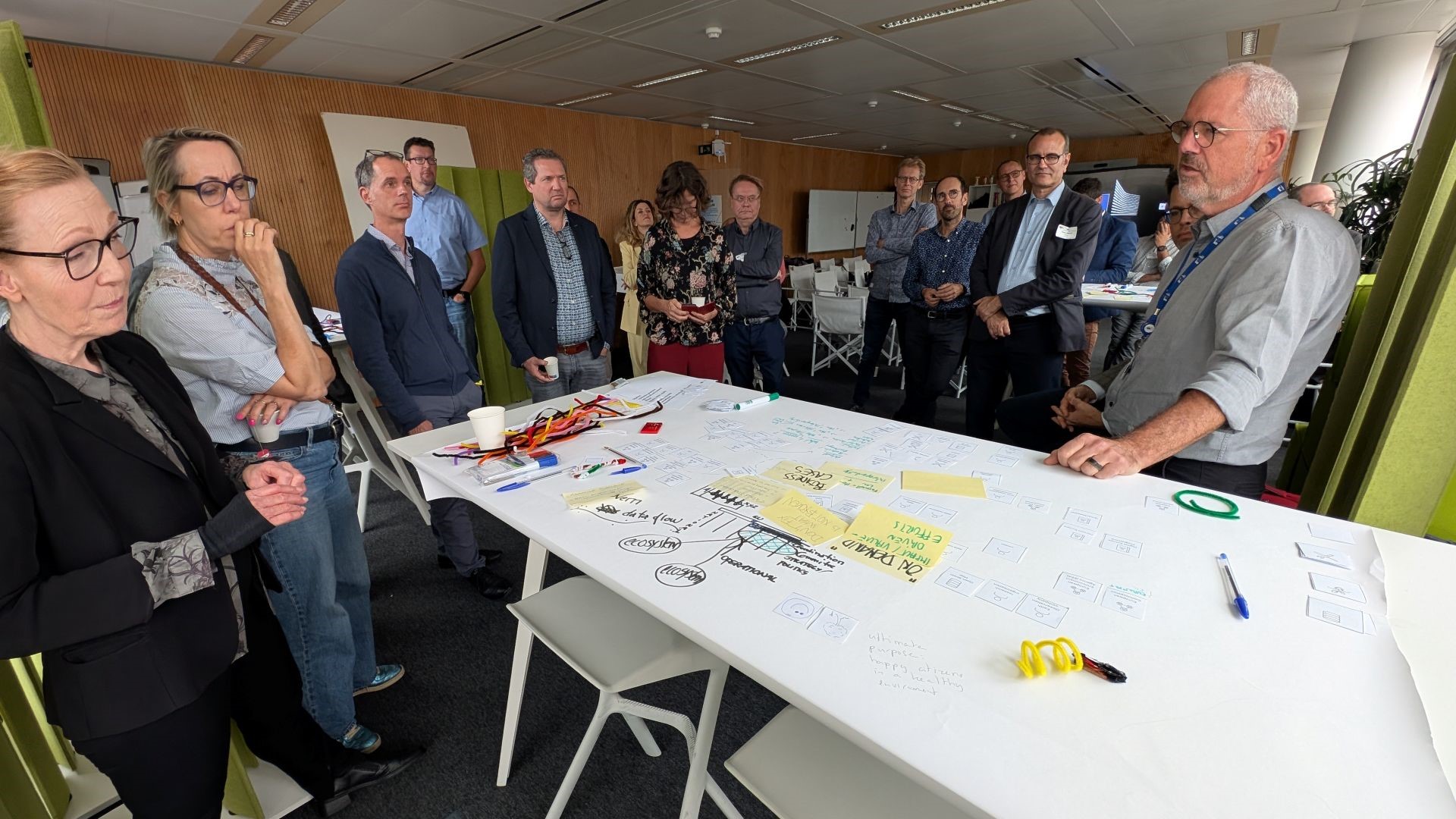
This change also includes big users such as the EC’s DGs and services, the EEA, and the national agencies. We have to ask what would need to happen for them to properly integrate their dataflows into a single, efficient infrastructure, and then make sure they commit to using that when their requirements are met.
With all that talk about being more user-driven, a central question we discussed at the end was how to get user input. I described how we as a company do it, based on the lean startup model:
- Start with the desired impact and identify who would be affected by achieving that impact
- Create a baseline value proposition targeted at the affected groups
- Communicate that value proposition through channels where the users would look for data products and related services
- From the incoming stream, identify 10 ideal users of a product, reach out to them, and get their input
Remember, many users want satisfaction soon, so processes that are supposed to meet user needs will need to be fast. Together with the objectives identified earlier in the workshop, this shows clearly that more agile and inclusive governance processes are needed that are not held back by inflexible parts of the current directive, such as the implementing rules.
Competitiveness: Switching from compliance-based thinking to impact-based thinking
My past 20 years of experience gave me the impression that if you do not enforce some level of compliance in the environmental sector, businesses and authorities will not do much. And, from a technical perspective, compliance testing is a useful tool to ensure interoperability.
That being said, compliance cannot be the end goal. As many participants commented during the workshop, many implementers just went with the minimum effort approach to reach compliance, however little value it would create. INSPIRE is there to help make effective policy decisions and to enable businesses, and ideally, “Compliance is a by-product of doing the right thing”.
Given that the current European Commission prioritises competitiveness above other policy goals, we discussed how that priority would affect INSPIRE and how INSPIRE – and especially its governance – would need to change to meet that challenge.
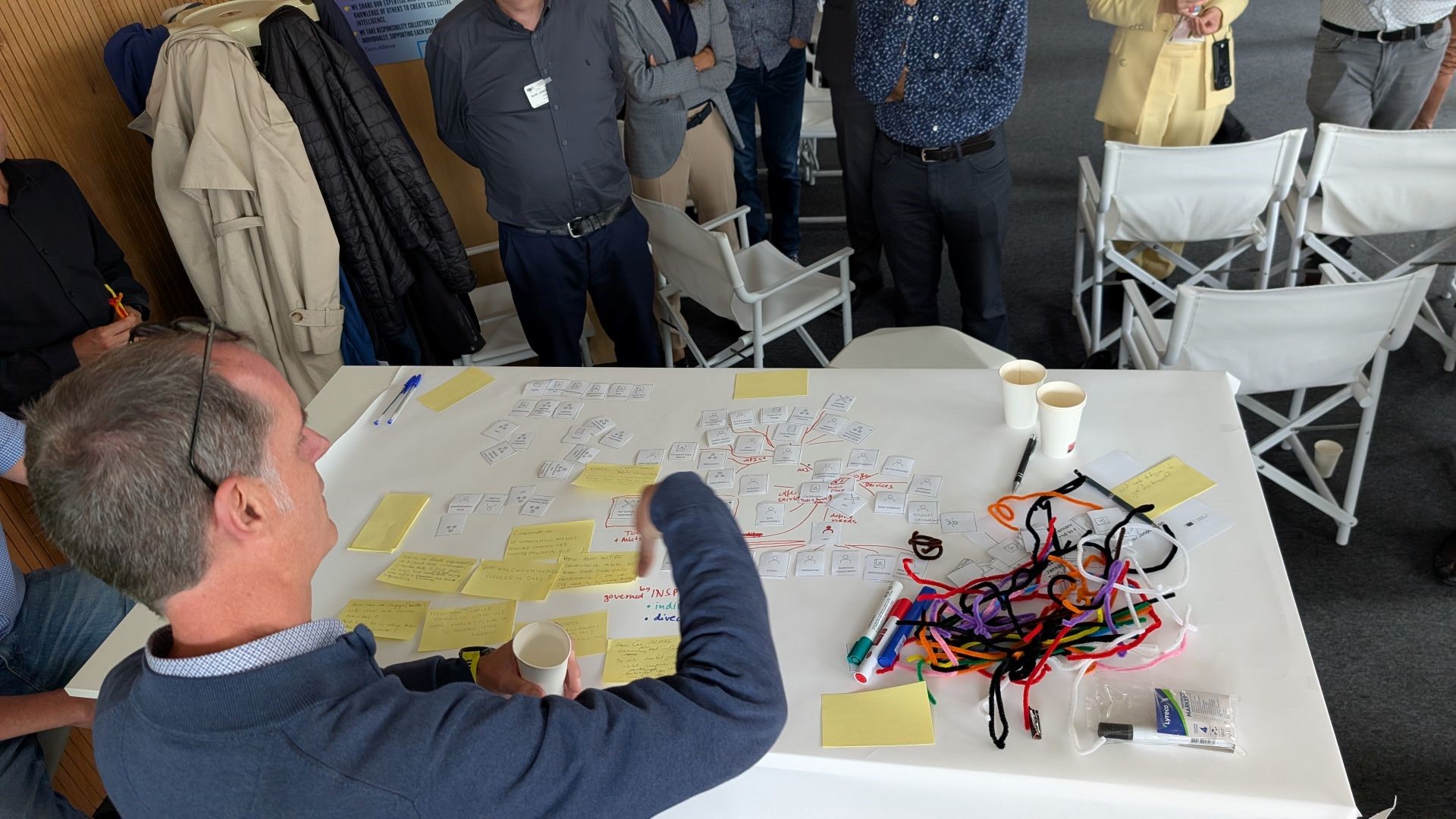
Competitiveness seems to be understood at least twofold:
- Create new opportunities and markets that favour good actors in the EU
- Reduce burdens, especially on SMEs and public authorities
Reducing Burdens
Let’s look at the burdens first: The INSPIRE evaluation has estimated that simplification of INSPIRE could save between 3 to 40M€ annually. Based on 10 years of analysis of tenders and experience in serving over 1.300 INSPIRE implementers, our estimate at wetransform is that, at maximum, about 2 to 3M€ per year could be saved through the proposed simplification measures. In the end, implementers still need to operate network services and create metadata to be compliant with the Open Data Directive and the High Value Datasets implementing act, though data harmonisation would become simpler and some double processing/publications might be avoided.
In the end, with INSPIRE, we make useful data on complex phenomena accessible. As was mentioned during the workshop several times, “no greedy reductionism of real-world complexity”, and “Simplification that sacrifices positive outcomes such as data usability” can reduce the burden of that ambition much without also reducing the value.
My view: Far more money and effort can be saved by exploiting synergies across all those different EU and national environmental legislations (no double and triple publication) and by choosing more efficient shared implementation models. I don’t think that abolishing any form of compliance testing or data harmonisation will really lead to competitiveness. Normally, standards and interoperability are enablers of efficient, large-scale markets. So, any changed legislation should consider how it could:
- Encourage synergies in implementation.
- Encourage shared infrastructure.
- Ensure that there are fair value capture and a balance of responsibility across actors (don’t put all burdens on data holders or data users).
- Transition to a model of iterative compliance with more flexibility.
- Have some sticks and carrots to make sure it is really implemented.
Enabling Opportunities
Now, let’s focus on how INSPIRE could enable new opportunities, especially now that Artificial Intelligence opens new doors every day.
Generative and predictive AI has the potential to completely change how we use geospatial data. In fifteen years, we may well rely entirely on ad hoc prompts to systems that understand our context and the data, instead of building and maintaining so-called last-mile applications. Gone would be QGIS, ArcMap, specific mobile apps, and classical portals. Instead, we have a tapestry of possibilities that would enable everyone to act and to help create a more healthy, sustainable environment.
What we still need to solve is how to get reliable output out of geospatial data using generative AI, and how we need to prepare and harmonise our environmental and geospatial data so that it can, in fact, be reliably processed by such systems.
Usually, this means making the data interoperable on a semantic and logical level, with a focus on high-value attributes. It also means creating continuous documentation (Lineage) of all processing, since otherwise users will be hesitant to use the data, for example in training Machine Learning models.
At the core, measuring the impact of INSPIRE could be done through measuring the amount of usable data in a meaningful way (location + attribute) and usage of services. Looking at specific aspects such as cross-border data usage as well as categories of data usage would make sense. It would be necessary to make it attractive for potential users to integrate and use the services instead of sidelining them.
To build up impact, funding mechanisms and incentives to contribute to the overall system, such as enhanced data products, would need to be added.
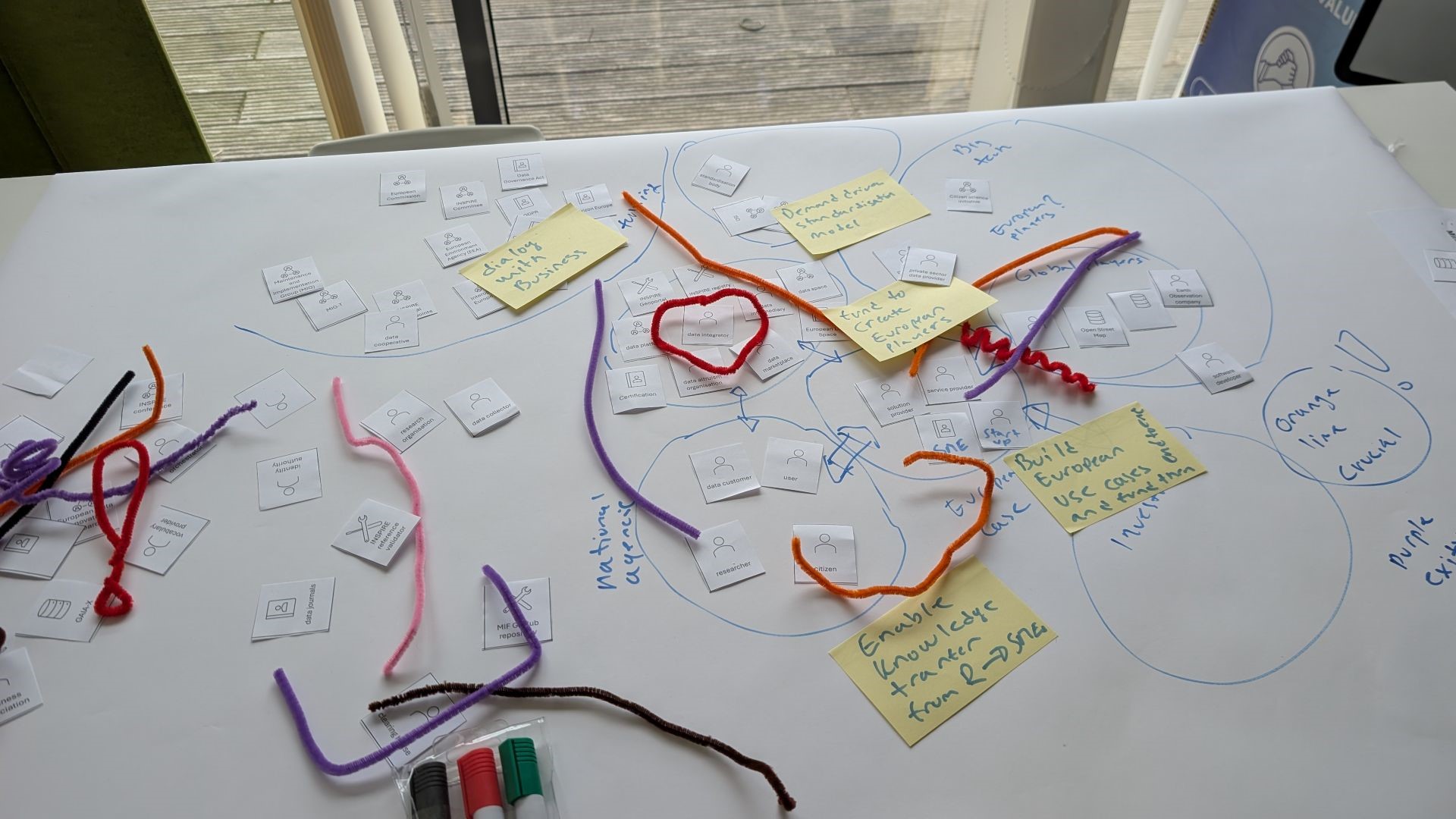
A proposal that two groups made was to identify and fund European use cases end-to-end to really make them work, such as building a system for unified environmental assessments. To me, this sounds challenging given the different local laws, but it would present a real opportunity to act at scale and speed. Another use case focused on sustainable building codes and their efficient, climate-neutral implementation by utilising local value chains.
One last thought related to the opportunities: If we are supposed to be competitive, make it a competition! Find incentives that really make people want to get data out there, make it interoperable, let it have impact!
Conclusion and next steps (for me)
This was, as expected, a highly engaging discussion among a group of knowledgeable, solution-oriented people that I highly respect. It left me in a different place than what I expected, but with a lot of food for thought. In particular, I decided to do at least the following three things:
- Document my experiences and interpretations of this participatory policy lab to process and order all the inputs I received.
- Draft a framework for the impact-based evaluation of INSPIRE that builds on data ecosystem/data spaces incentives and tries to solve the transition from compliance focus to impact focus.
- Use a Strategy Canvas to develop the new value proposition of INSPIRE in the “market” of data legislation to understand where it specifically should focus, compared to the Common European Data Spaces, Open Data Legislation, and other data initiatives related to environmental data and climate.
The first of these three is what you have just read, the other two will follow towards the end of October – stay tuned!
I hope that with these three contributions, I can provide useful input for the discussions around regulation and community governance that we are currently having. Please feel free to reach out to me to discuss any of these topics.

